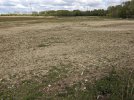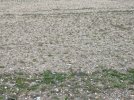Richard Gawler
Western Thunderer
I have assembled a water column for Heybridge Basin from a Duncan Models kit. This column is described as GER pattern but the design is so plain it ought to pass as generic.
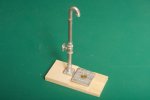
The plywood base is something solid to fix the column onto. I can build up the surrounding ground level with foam board or similar.
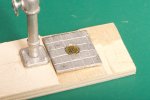
The kit provides a base with detail of what I think is stone setts. The grating is a cab grill made for 4mm scale.
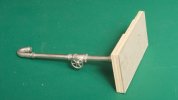
The idea of the card underneath is to let me prise the model off the baseboard if I ever want to re-use it somewhere else.
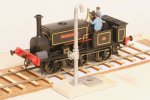
The model will have to stand quite close to the railway if the hose is to reach a water filler in the middle of a loco.
I’ll put off making the hose until after painting. The stash of unbuilt kits is diminishing but I am gaining a collection of almost-but-not-quite-finished models in its place.

The plywood base is something solid to fix the column onto. I can build up the surrounding ground level with foam board or similar.

The kit provides a base with detail of what I think is stone setts. The grating is a cab grill made for 4mm scale.

The idea of the card underneath is to let me prise the model off the baseboard if I ever want to re-use it somewhere else.

The model will have to stand quite close to the railway if the hose is to reach a water filler in the middle of a loco.
I’ll put off making the hose until after painting. The stash of unbuilt kits is diminishing but I am gaining a collection of almost-but-not-quite-finished models in its place.


